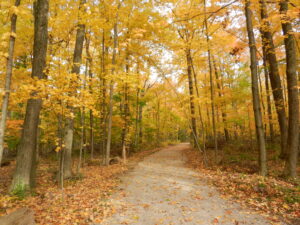By Gabe Ross, Farm Manager

Here at Gallant Farm, we’ve planted a wide variety of cover crops and cover crop mixes, but this year’s garden has cover crops that are a little different than normal. I decided to plant some things that aren’t traditionally used as cover crops, but most people recognize.
The first of these is a plant that we all know and more than likely see every day, corn. You’re more than likely thinking, planting corn as cover crop seems crazy, and it’s true it’s almost never done. Corn seed can be expensive but on a home garden scale it doesn’t take much. I used seed left over from the Spring. Corn is after all a warm season annual grass. Warm season annual grasses like sorghum/Sudan grass and pearl millet are often part of warm season cover crop mixes, however most home gardeners don’t have those on hand, but they might have some seed corn of some type. Corn actually grows a little quicker than the other two later in the season. Most important of all most home gardeners already know how to grow corn. I planted ours after tomatoes and squash were pretty much finished but not completely. I threw in some red clover and peas with the corn to add something that would survive the winter. As you can see in the picture the corn grew well and is shading out weeds. It will die before any ears form but will leave a heavy biomass to decompose and hold the soil together.

The next cover crop I planted that most gardeners recognize is okra. Okra is a warm season vegetable that thrives in the heat of August. I planted the okra after early season greens were finished growing and mixed it with cowpeas, also known as black eyed peas. This is a warm season legume that is really a bean not a pea. The okra provides a tall woody stem for the pea vines to climb and creates a shade over the soil to prevent weeds. Both of these crops will die with frost, but the okra will leave a stubble that holds soil and prevents erosion. In the Great Plains it is being used as a snow catch that keeps the much-needed moisture that snow provides from drifting away and running off in the ditches. Planted early enough it can also flower and the pods can be picked and eaten while leaving most of the plant intact. If you haven’t tried eating okra, it’s great, just pick the pods when they’re smaller than your palm.

Kale is the last one I planted that isn’t your typical cover. It creates a good root mass and some of the leaves can still be used to eat. Kale is also very frost tolerant and will grow well into the winter.
When it comes to cover crops there are a lot of options out there and there is plenty of information to be had. I’m providing some options that people might have on hand. These would be a place to start if you want to dip your toe in the water of cover cropping your home garden. If you want to learn more or see our cover crops in person, visit Gallant Farm Thursday – Sunday 12pm – 5pm now through April.






